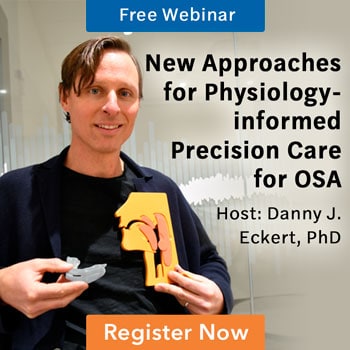CE Expiration Date: June 19, 2023
CEU (Continuing Education Unit):2 Credit(s)
AGD Code: 550
Educational Aims
Telemedicine is a disruptive force in medicine with significant potential to increase access to care, relieve pressure from an overburdened system, and reduce overall healthcare costs. It has unique indications for use in dental sleep practices including sleep testing and initial consultations. This article will help readers understand the different types of telemedicine, workflow options, legal considerations, and payor guidelines so practitioners are positioned to make informed decisions about telemedicine’s implications for their practices.
Expected Outcomes
Dental Sleep Practice subscribers can answer the CE questions by taking the quiz to earn 2 hours of CE from reading the article. Correctly answering the questions will exhibit the reader will:
- Understand the definition of telemedicine
- Know the regulatory limitations of telemedicine in a dental sleep practice
- Comprehend the basics of payor requirements for proper telemedicine utilization
- Have insights into possible workflows utilizing telemedicine for sleep testing, consultations, and other appointments
Dr. Jagdeep Bijwadia shows how telemedicine in COVID-19 times has moved the field of telemedicine forward in recognition, accessibility, and regulatory aspects. Read more and take the quiz for 2 CE credits!
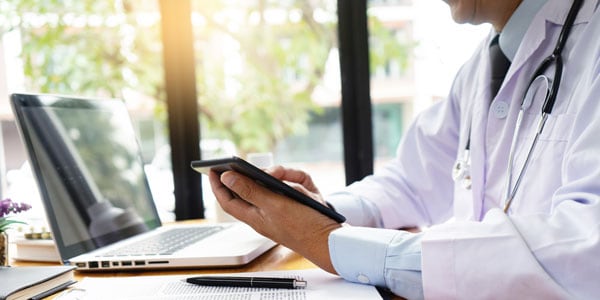
by Jagdeep Bijwadia, MD, MBA, D.ABDSM
Table of Contents
Telemedicine has experienced accelerated growth and as evidenced by the current COVID-19 crisis, it is a powerful resource that enables the disruption of healthcare delivery.1
Telehealth and telemedicine are terms often used interchangeably, but if one is a purist then the term telemedicine is really a subset of telehealth. Telehealth encompasses all health-related uses of communications technology. Telemedicine specifically applies to the use of this technology for clinical applications.
The idea that technology can be used to take care of patients at a distance is not new.2 Radiology was one of the first specialties to adopt to this idea as early as the 1950s. Hospitals around Montreal had a teleradiology system in place sharing images with radiologists. Many specialties have since adopted telemedicine including dermatology, psychiatry, oncology, and ophthalmology. The list continues to expand.
The most important event in telemedicine was the introduction of video-teleconferencing into the healthcare environment. Video-teleconferencing was originally envisioned as a tool to facilitate business meetings between people separated by geographical distance. As costs declined and cloud technologies became more robust, the quality and stability of teleconference software became suitable for medical applications.
Telemedicine was first deployed in the early 1970s to reach rural areas where medical care was sparse. Governmental agencies began investing heavily in this technology. NASA took an active early role in the program to design and test the technology that linked rural patients in mobile support units with physicians at Indian Health Service hospitals in Arizona. It was quickly evident that this technology could be used in urban populations with healthcare shortages, or as a tool to respond to medical emergencies.
While telemedicine was originally designed to help people with poor access to care, it is now increasingly becoming a common path to routine health care in a variety of clinical settings. More and more, it is utilized as a convenient and inexpensive alternative to traditional in-person visits.
Existing telehealth infrastructure is now being leveraged to respond to the COVID-19 crisis in the US in unprecedented ways. A recent article in the New England Journal of Medicine uses the term “forward triage” to describe home-based telemedicine visits, enabling medical staff to “presort” patients prior to their arrival in urgent care and emergency rooms. This frees up vital resources while protecting both patients and healthcare workers from exposure. Teledoc and America Well, two large public telemedicine platforms, have ramped up their capabilities to address this urgent need. Their staff practitioners are able to triage patients at home who are worried they may have COVID-19 symptoms.
ICUs are increasingly using telemedicine (e-ICU) to take care of critically ill COVID-19 patients. Using telemedicine platforms, ICU staff at central locations can monitor patients across one or several ICUs allowing real time examination and monitoring of various physiological data points like cardiac devices and ventilators. This conserves vital critical care, sub-specialist, and nursing resources, increasing medical system capacity while minimizing exposure.
Types of Telemedicine
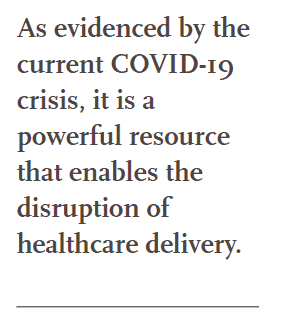 The most standard form of telemedicine, real-time synchronous consultations, requires live interaction between a health professional and a patient using both audio and video communication.
The most standard form of telemedicine, real-time synchronous consultations, requires live interaction between a health professional and a patient using both audio and video communication.
By contrast, “store and forward” strategies involve collecting data that is reviewed later by a professional. These strategies are common in radiology or pathology, where even traditional consultations areasynchronous.
Lastly, remote patient monitoring is a form of homecare telehealth where patients use mobile medical devices and technology to gather patient-generated health data such as blood pressure, oxygen saturation, respiratory rate and send it to healthcare professionals who review the data and communicate back with the patients to direct their care.
Pros and Cons
The primary advantage of telemedicine is its ability to expand the reach of healthcare services beyond the constraints of physical distance. It increases accessibility to care for patients both in terms of geographic reach as well as access to a variety of specialties that may not be readily available. For example, a rural hospital lacking sleep medicine specialists may employ a telemedicine solution to address that need.
Several studies confirm that patient engagement and satisfaction is higher when using telemedicine compared to traditional visits.3 Since the overhead costs of telemedicine are lower, the cost of care is often reduced, and several large insurers cover the cost and have incentive programs that encourage patients to use telemedicine platforms instead of urgent care or emergency room visits.
Not all medical care can be provided using telemedicine, but the standard of care using telemedicine is equal to in person visits. In a recent Spanish study sleep apnea management via telemedicine was compared to clinic-based care. There was no difference in treatment outcomes or patient satisfaction.4 All state Medical boards hold practitioners to the same standard of care as provided in person.
 Like any new technology, telemedicine is not without its challenges. Utilizing telemedicine does require some degree of technical proficiency, and some populations (particularly the very elderly) may find it difficult to access. There also have been concerns raised about continuity of care, since patients may not have continuing relationships but rather just episodic visits for example to take care of an acute medical question. As telemedicine matures and patients get accustomed to the technology it is likely that virtual care may become a more suitable norm for long term doctor patient interactions.
Like any new technology, telemedicine is not without its challenges. Utilizing telemedicine does require some degree of technical proficiency, and some populations (particularly the very elderly) may find it difficult to access. There also have been concerns raised about continuity of care, since patients may not have continuing relationships but rather just episodic visits for example to take care of an acute medical question. As telemedicine matures and patients get accustomed to the technology it is likely that virtual care may become a more suitable norm for long term doctor patient interactions.
One of the challenges to patient adoption of telemedicine is the reimbursement for home-based visits. Insurers have been slow to respond to the new technologies and therefore patients are often required to pay for home-based visits out of pocket. Along with the reimbursement challenges, regulatory issues are also a challenge and requirements often vary by state, complicating efforts to set up effective multi-state networks.
Legal and Regulatory Considerations
The Center for Connected Health Policy’s (CCHP) Spring 2019 report “State Telehealth Laws and Reimbursement Policies” offers policymakers, health advocates, and other interested healthcare professionals a summary guide of telehealth-related policies, laws, and regulations for all 50 states.
Many states are beginning to expand telehealth reimbursement, yet others continue to create restrictive regulations regarding telehealth services. It is important to check your own state laws regarding telemedicine but there are certainly some principles for which most states have reached a consensus.
Most states allow telemedicine consults when conducted via HIPAA secure audio-video platforms. Email, telephone, and fax are rarely acceptable forms of delivery unless they are in conjunction with some other type of system. Many states are either silent on or explicitly exclude email, telephone, and fax options, from the definition of telehealth and/or telemedicine.
Some state’s programs allow and reimburse for store and forward telemedicine and yet others do the same for remote patient monitoring. Six state Medicaid programs (Alaska, Arizona, Maryland, Minnesota, Virginia and Washington) reimburse for each, although certain limitations apply.
Thirty-nine states currently require some sort of patient consent for telemedicine. Most states require the consulting practitioner to be licensed in the state in which the patient is seen. There are several states that issue special licenses or certificates related to telehealth. The licenses could allow an out-of-state provider to render services via telemedicine in a state where they are not located. Twenty-nine states and one jurisdiction (D.C.) have adopted the Federation of State Medical Boards’ (FSMB) Interstate Medical Licensure Compact (IMLC) in its place. The IMLC allows for an Interstate Commission to form an expedited licensure process for licensed physicians to apply for licenses in other states.
Most states allow online prescribing for treatment once a telemedicine consultation has been completed. More stringent policies typically exist restricting practitioners from prescribing controlled substances through telehealth.
With the COVID-19 pandemic, Medicare has significantly expanded the use of telemedicine and relaxed some HIPAA regulations as well as the restrictions around site of origin to combat the surge in need for access to medical consultation while maintaining social distancing strategies.
Reimbursement Considerations
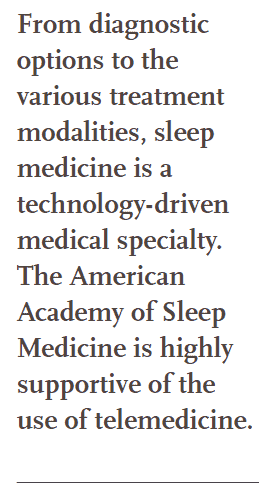 Prior to the current COVID-19 pandemic, Medicare policies supported reimbursement for telemedicine with some significant restrictions. For example, Medicare would reimburse for telehealth services offered by a provider at a distant site if the Medicare beneficiary was at an originating site in a designated healthcare shortage area. Examples of qualifying originating sites include physician offices in rural areas, hospitals, critical access hospitals, rural heath clinics, federally qualified heath centers hospital-based dialysis centers, skilled nursing facilities, and community mental health centers. There would be no reimbursement if a patient was in their own home setting.
Prior to the current COVID-19 pandemic, Medicare policies supported reimbursement for telemedicine with some significant restrictions. For example, Medicare would reimburse for telehealth services offered by a provider at a distant site if the Medicare beneficiary was at an originating site in a designated healthcare shortage area. Examples of qualifying originating sites include physician offices in rural areas, hospitals, critical access hospitals, rural heath clinics, federally qualified heath centers hospital-based dialysis centers, skilled nursing facilities, and community mental health centers. There would be no reimbursement if a patient was in their own home setting.
Private payers’ reimbursement policies vary greatly. The big five (Aetna, Cigna, United, Blue Cross Blue Shield, Humana and United Healthcare) all offer some sort of coverage for telemedicine. How much each payer reimbursed depends on the policy in that state (many states have parity laws that mandate equal reimbursement for telemedicine and in person visits) and the individual policy terms.
Telemedicine and Dental Sleep Medicine
From diagnostic options to the various treatment modalities, sleep medicine is a technology-driven medical specialty. The American Academy of Sleep Medicine (AASM) is highly supportive of the use of telemedicine.5 In January 2016, AASM officially launched Sleep TM, a telemedicine platform that was designed for the sleep field and subsequently began developing multiple resources and educational opportunities to equip sleep specialists with the tools to implement a telemedicine program. AASM also tracks and supports telemedicine at the state and federal level.
With the advent of home sleep testing, the patient journey from screening to consultation and testing can be seamlessly completed within the patient’s own home patient home.
A common treatment pathway for dentists is to identify a patient at risk for sleep disordered breathing in the practice and engage them in a conversation about the dangers of undiagnosed sleep apnea and the positive impacts treatment could have on the patient’s overall health. Patients are then referred to the local sleep physician for further workup. Often, patient interest in seeking a diagnosis wanes as the patient leaves the dental office and encounters long wait times for an appointment with a sleep specialist. Diagnosis usually involves trips to an expensive sleep center and CPAP is often the only treatment offered even when mild to moderate sleep apnea is identified and the patient would clearly prefer alternative management.
Getting to a diagnosis and a dental device treatment option when clinically indicated can be easily pursued with better dentist-physician collaboration, taking patient choice into account, and leveraging telemedicine with home sleep testing technologies.
A typical patient journey using a telemedicine platform involves the dental front office scheduling a telemedicine consult with the patient as soon as they are identified as at risk in the dental office. Within a day or two the patient has a video consultation with a board-certified sleep specialist or trained nurse practitioner who can order a home-based sleep test. Guidelines for a comprehensive sleep telemedicine consult are detailed in an AASM telemedicine position paper. Once the home sleep test results are available, the prescription for a dental device is immediately available to the dentist with all the supporting consultation, testing, and other documentation needed for reimbursement submission to a payor. If CPAP is required, the sleep physician’s practice can arrange for this and follow the patient’s progress.
Advantages of such a workflow are faster turnaround times (typically two to three weeks), higher patient engagement and satisfaction, lower overall costs, and close collaboration between the dentists and the physicians with a strong focus on both patient choice and wellness.
Further follow-up care, including efficacy testing, referral back to the dentist for patients who subsequently fail a CPAP therapy trial, follow-up consultations for patients who do not respond adequately to dental device adjustment, and chronic care coordination, could all be part of ongoing collaboration.
Working with local physicians is obviously still important, however telemedicine can and should be an important adjunct to a dental sleep practice, especially those that have difficulty finding local sleep physicians, those who have patients traveling from long distance, or those who prefer the convenience of home-based care.
While most payors have not historically paid for home-based telemedicine visits, almost all of them now recognize telemedicine visits as an option for patients and will pay for subsequent home sleep testing and dental devices that are prescribed. Medicare is an exception and requires a face to face visit as a prerequisite to reimbursing for a dental device.
The present COVID-19 pandemic has created huge challenges for dentists in the dental sleep arena. There have been concerns about aerosolization and increased risks to contacts around COVID-positive patients on CPAP, making dental devices an attractive alternative in some cases. There are several innovative ways in which telemedicine is being leveraged to care for patients by some leading sleep dentists paving the way for others to follow their example. Patients at risk for OSA are first medically diagnosed by a sleep specialist using telemedicine consultation and home sleep testing. Dentists then complete all follow up visits, including seating of the custom device and using a telemedicine platform after an initial in-person visit to obtain the bite registration and dental exam.
Dentists may also consider telemedicine consults to teach patients how to fit titratable temporary devices as a temporary measure during the COVID-19 pandemic, with the intention of bringing these patients back into the office for a custom device when conditions allow.
Choosing a Telemedicine Provider
There are some important criteria to consider when choosing a telemedicine partner. The platform should be HIPAA secure, user-friendly, and easily facilitate any home-based treatments that may be required. Ensure the workflow can be easily integrated into your current practice. Be certain you understand how consultation and sleep testing results will be communicated back to your office. The telemedicine practice should be able to help with letters of medical necessity or peer review with insurers. Compatibility with commonly available browsers and devices including mobile devices is critical. A telemedicine platform should provide some analytics and visibility so that you can track patients’ progress through the various steps on a real-time dashboard. Make sure you or one of your staff go through the consultation and testing process before you move forward. This will allow you to instruct your patients well and give you a sense of how user-friendly the platform is.
The overall cost to the patient, should be taken into consideration as well. Like any other referral relationship make sure you take the opportunity to talk to some of the physicians in the telemedicine practice and understand their approaches to treatment. Pathways for follow-up for patients who are not candidates for dental devices should be in place so that comprehensive care is provided.
Summary
Telemedicine is a cost effective, scalable, and patient-centered method to deliver care in many settings. The COVID-19 pandemic has likely moved the field of telemedicine forward in terms of recognition, accessibility, and from a regulatory perspective. It is likely that telemedicine will become a routine part of medicine and continue offering unique opportunities to streamline and enhance the practice of dental sleep medicine.
Telemedicine in COVID-19 times will transform practices well into the future. Read more about Dr. Bijwadia’s ideas on telemedicine applications here: https://dentalsleeppractice.com/physicians-perspective/time-to-connect-with-a-virtual-doctor/
References
- Virtually Perfect? Telemedicine for Covid-19. Hollander JE, Carr BG. N Engl J Med. 2020 Mar 11.
- Telemedicine: Emerging e-medicine SK Mun, JW Turner – Annual Review of Biomedical Engineering, 1999 – annualreviews.org
- Comparing Patients’ Experiences with Electronic and Traditional Consultation: Results from a Multisite Survey. Ackerman SL, Gleason N, Shipman SA. J Gen Intern Med. 2020 Feb 19. doi: 10.1007/s11606-020-05703-7.
- Reliability of telemedicine in the diagnosis and treatment of sleep apnea syndrome. Coma-Del-Corral MJ, Alonso-Álvarez ML, Allende M, Cordero J, Ordax E, Masa F, Terán-Santos J. Telemed J E Health. 2013 Jan;19(1):7-12. doi: 10.1089/tmj.2012.0007. Epub 2012 Nov 27.
- American Academy of Sleep Medicine (AASM) Position Paper for the Use of Telemedicine for the Diagnosis and Treatment of Sleep Disorders. Singh J, Badr MS, Diebert W, Epstein L, Hwang D, Karres V, Khosla S, Mims KN, Shamim-Uzzaman, A, Kirsch D, Heald JL, McCann K. J Clin Sleep Med. 2015 Oct 15;11(10):1187-98. doi: 10.5664/jcsm.5098.

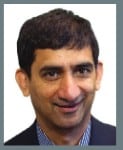 Dr. Jagdeep Bijwadia is the founder and CEO of SleepMedRx. He is board certified in Internal Medicine, Pulmonary Medicine and Sleep Medicine. Prior to starting his own practice in Minnesota, he served as Attending Physician at HealthPartners Medical Group (HPMG), where he was the Department Head and Director of the Sleep Medicine Center. He currently holds a faculty position as Assistant Professor in the Department of Pulmonary Critical Care and Sleep Medicine at the University of Minnesota. He has been named top doc by the Minneapolis magazine as well as US News and World Report. He is a past president of the Minnesota Sleep Society.
Dr. Jagdeep Bijwadia is the founder and CEO of SleepMedRx. He is board certified in Internal Medicine, Pulmonary Medicine and Sleep Medicine. Prior to starting his own practice in Minnesota, he served as Attending Physician at HealthPartners Medical Group (HPMG), where he was the Department Head and Director of the Sleep Medicine Center. He currently holds a faculty position as Assistant Professor in the Department of Pulmonary Critical Care and Sleep Medicine at the University of Minnesota. He has been named top doc by the Minneapolis magazine as well as US News and World Report. He is a past president of the Minnesota Sleep Society.
